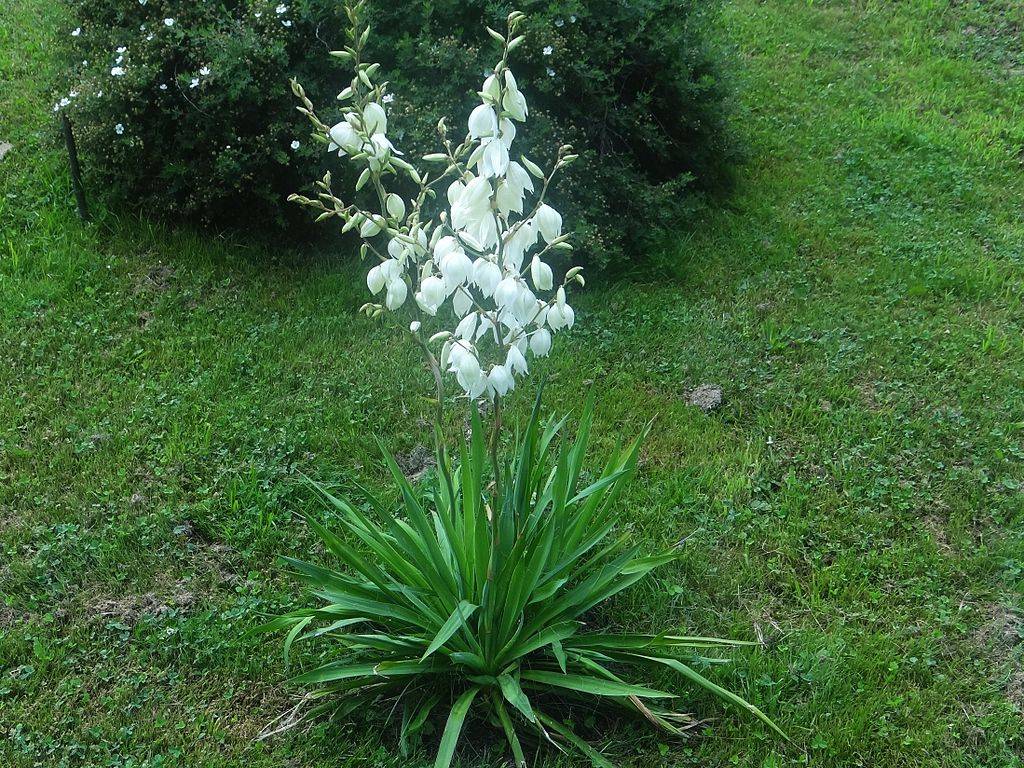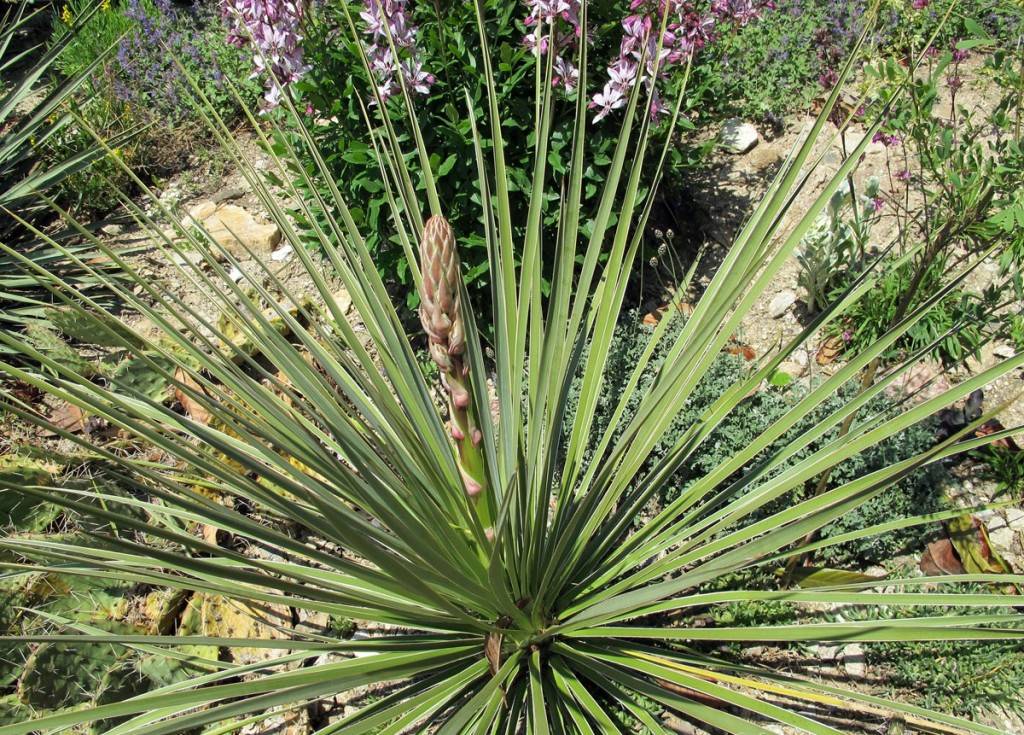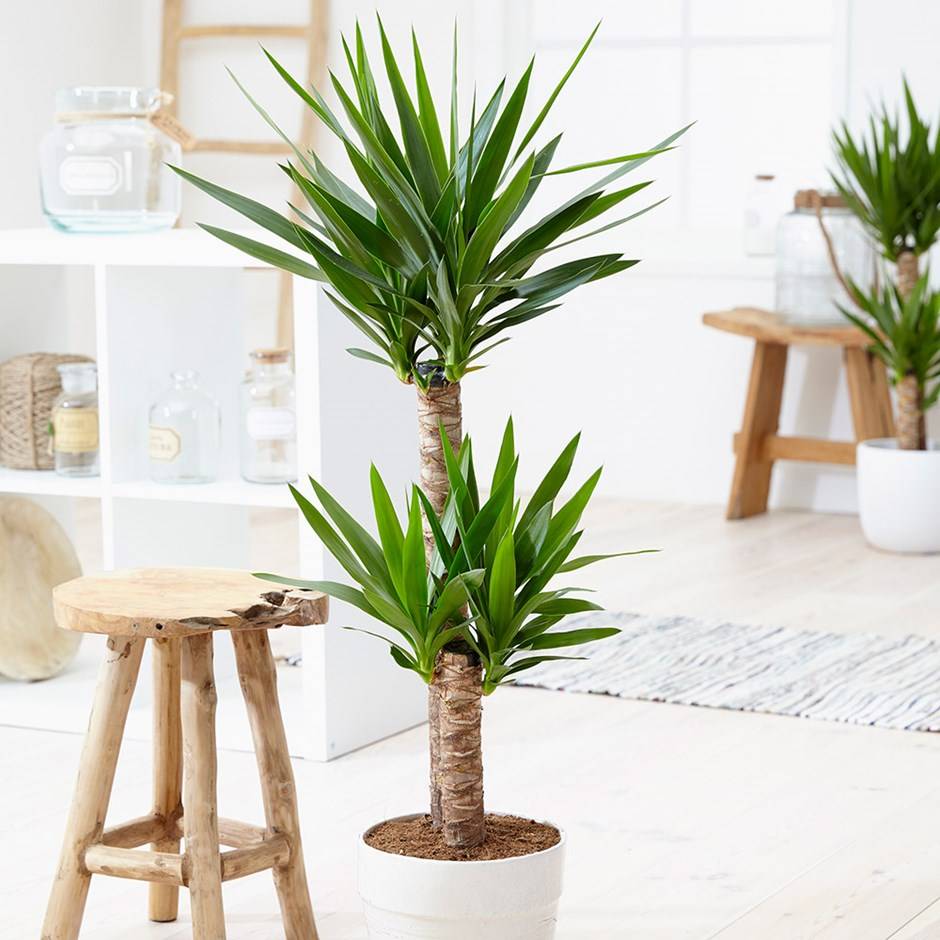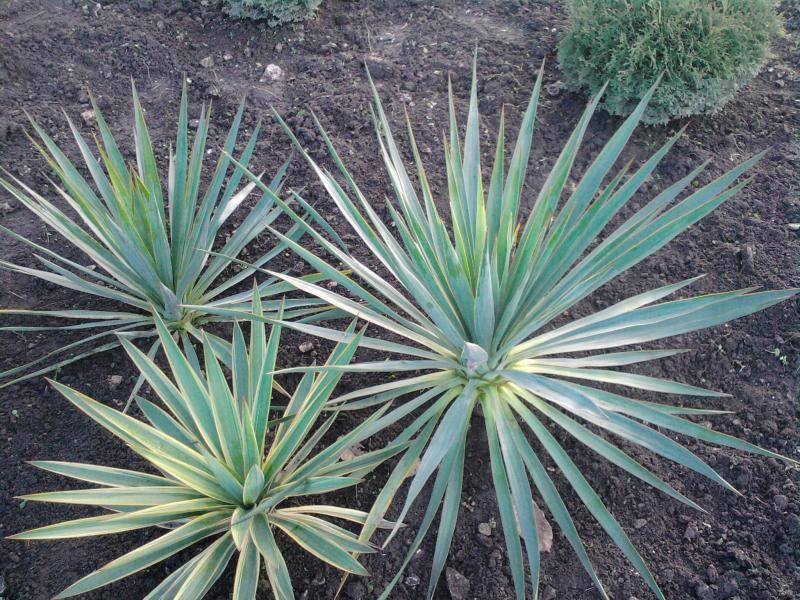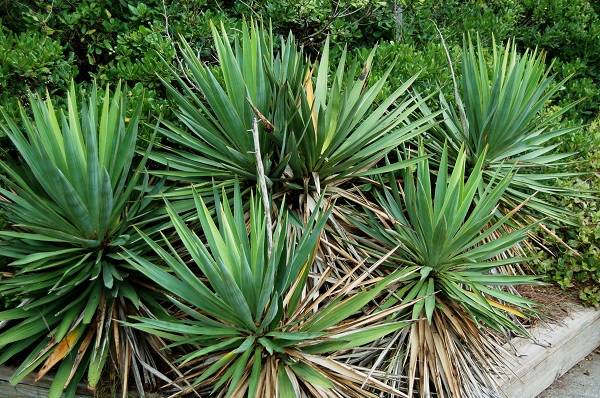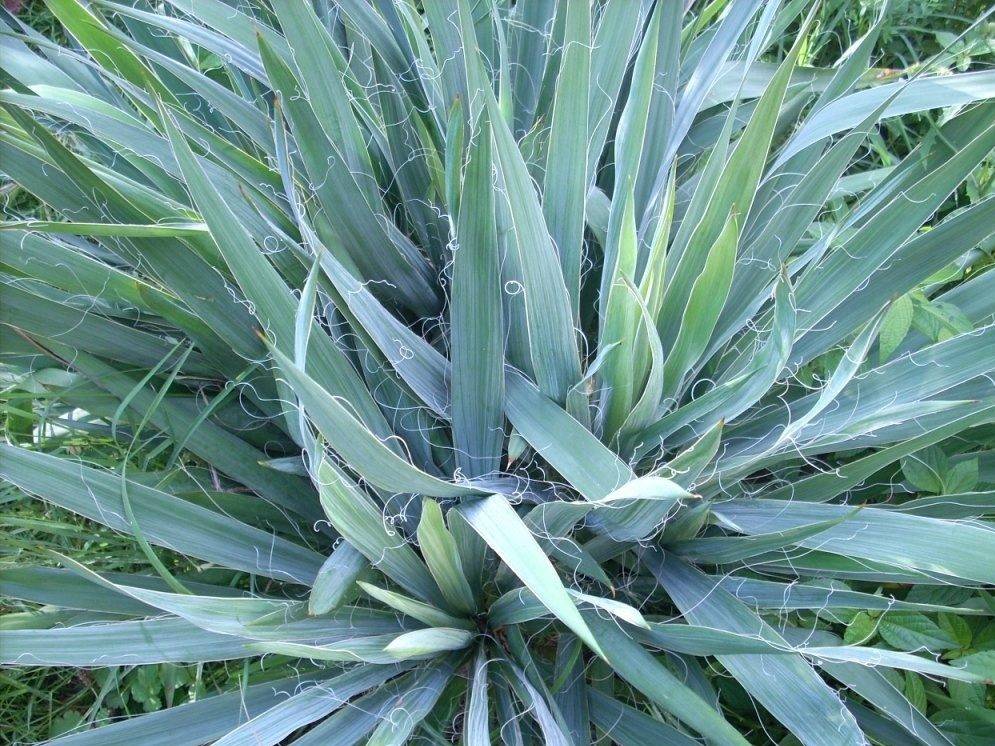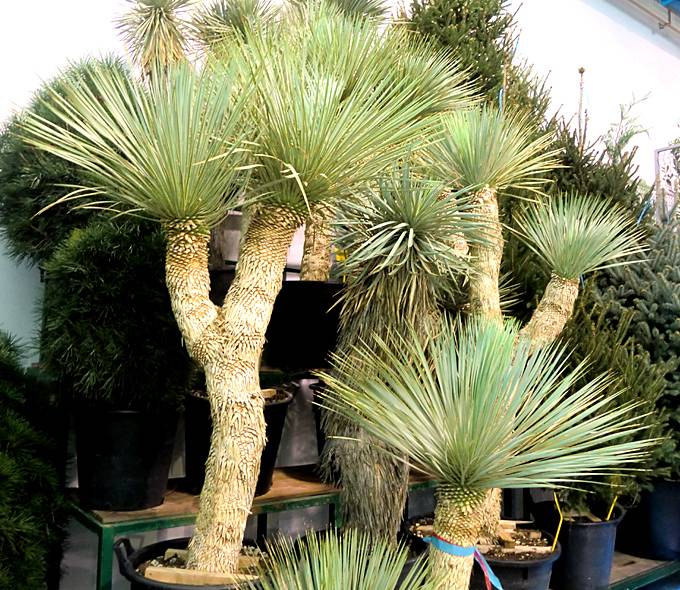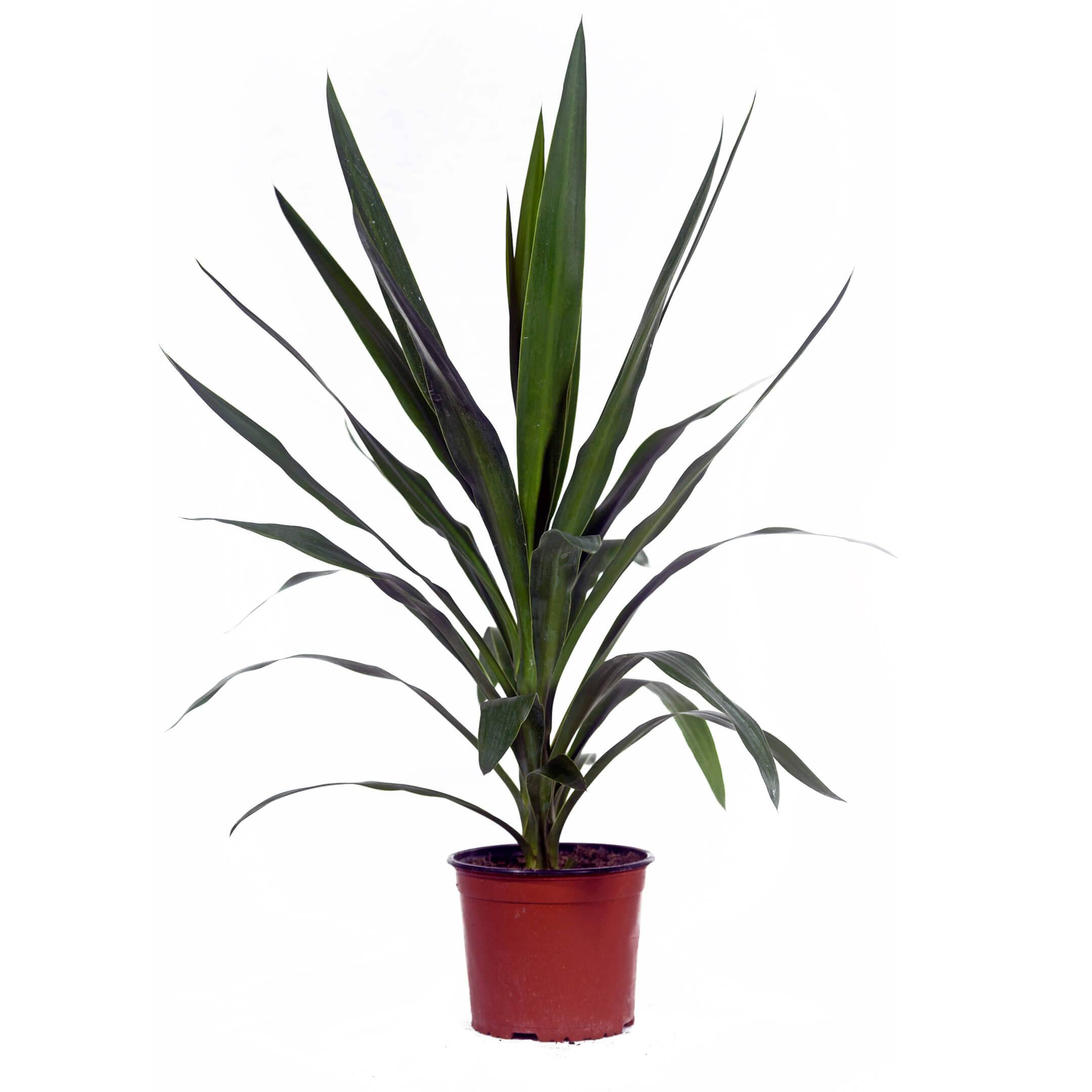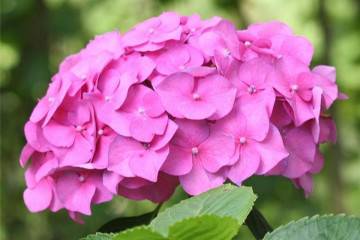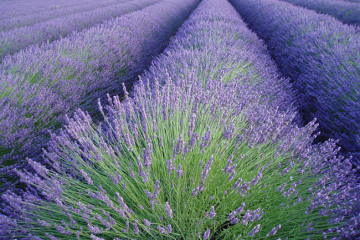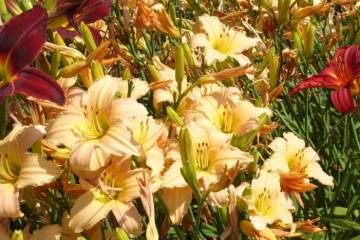Yucca garden and filamentous in the country - when it blooms
Content:
The use in landscape design of unusual plants, not typical for the region, gives the site a unique charm. Garden yucca is perfect for the role of such an exotic. Its original, unusual appearance, beautiful flowering, varied color of leaves will decorate a summer cottage or public space, give the landscape a zest. This article will tell you how to plant yucca on the street.
The origin and appearance of the plant
Garden yucca is an evergreen perennial shrub. The stem of the yucca is practically absent; it has turned into a dense warp. The plant belongs to the genus Yucca of the botanical family Asparagus.
Description of the plant
Leaves are linear-lanceolate, they do not have a petiole, with its base each leaf is attached to a common rosette. The color of the leaves in the wild species is blue-green, in the domestic varieties it can be lighter or darker, with stripes and additional red coloration. In length, leaf plates can reach 90 cm with a width of up to 4 cm.
Distribution and ecology
The natural habitat of the species is the east and southeast of the United States. At home, the plant grows on dry sandy or rocky areas of the coast, roadsides, and other open places also suit it.
The yucca breeding method is remarkable. An inconspicuous butterfly helps her to reproduce. Yucca can be pollinated by only one insect - the yucca moth. Therefore, outside the natural range, where it is not possible to find a pollinating insect, its fruits can be obtained only with artificial pollination.
As an ornamental plant, yucca is grown everywhere in the garden. With shelter, it perfectly tolerates the winters of the Middle Lane, and in Ukraine and Belarus it is not even insulated for the winter.
Types and varieties of yucca
Street yucca is a group of plants that includes several species and subspecies. All of them are similar in agricultural technology, growing conditions, but sometimes very different in appearance. The following are the most common plant varieties that you can plant in your garden.
Shidigera
This species comes from the state of Nevada, or rather from the Mojave Desert. It is a low tree or shrub. It features a powerful barrel. The dark green tough leaves are like swords. An adult plant keeps them only at the top. The creamy flowers are like bells that are gathered in panicles.
Sizaya
The variety is native to Mexico. Very effective appearance.The trunk is crowned with a lush cap of narrow drooping leaves. The color of the leaf blades is green with a bluish tint. Gray-gray yucca grows up to 2 m, inflorescence up to 1 m high. Feels good in the open field.
In regions with mild climates, the palm-like yucca often graces public spaces. The plant is also successfully used as an indoor plant.
Elephant, or Elephantis
Elephant (Yucca Elephantipes) got its name due to its unique appearance. Its trunks are like the legs of an elephant. The native land of the species is the Mexican Highlands. It is characterized by a very fast growth; under favorable conditions, the tree can grow by 60 cm per year.
Elephant yucca is a house plant, it can be used outdoors in tubs and containers in the summer, it is better to bring it to a warm place for the winter. Elephantis grows in several trunks, covered with light bark and decorated at the tops with lush rosettes of long, hard, light green leaves. In some cases, the length of the sheet plate can reach 120 cm.
Radiant (Y. Radiosa)
Radiant, or tall, at home grows up to 7 m. Narrow leaves about a centimeter wide and up to 50 cm long are located tightly to each other. The edges of the bright green leaves are decorated with whitish threads.
Glorious
Compared to the filamentous, the glorious - low variety, only up to 2 m in height. It is characterized by slow growth. The appearance of the leaves is interesting: they seem to be folded in half along the central vein. The leaves of young plants are collected in a root rosette; in adults, a strong trunk is formed. The plant is decorated with yellow, orange and pink stripes on the leaves. Flowering occurs from July to September. Creamy corollas with red veins.
Short-leaved
The short-leaved (Yucca Brevifolia) is characterized by a thick trunk, strongly branching at the top. The foliage is short, hard, brownish at the ends, triangular in shape. The edge of the leaf is serrated. The flowers are yellow. Growing is carried out exclusively at home.
The homeland of the species is southern California and Arizona. In wild specimens, the trunk diameter is 45-50 cm.
Aloe leaf
Yucca Aloifolia is very slow growing. The single trunk is covered with light brown bark. The foliage is dark green glossy. Bred varieties with light yellow longitudinal stripes on the leaves. In addition to variegated, there is a variety with a violet-gray color of young foliage, adult leaves are dark green in color.
Trekula
Yucca Trekula can grow up to 10 m. The native land of the species is the states of Texas and New Mexico. It grows very slowly. Adult specimens bloom profusely and for a long time. Flowers that look like bells come in white, pink and even purple hues. The leaves are bluish, pointed, up to 1 m long, in shape they resemble a dagger. This species is suitable for indoor floriculture, has healing properties.
Filamentous
Yucca filamentous, planting and care in the open field, which are described below, is the most common variety in dachas from the Crimea to the Urals and Siberia. Yucca Filamentosa in its natural environment can reach 6.5 m in height. Its tough dark green narrow leaves are adorned with long filamentous filaments along the edge, for which it got its name. White-yellow flowers appear in mid-spring, have a light pleasant aroma, collected in large panicles.
Young plants will perfectly decorate the apartment. Currently, breeders have obtained varieties with two- and three-colored leaves.
Coracoid
Yucca beak-shaped, or Rostrata, is distinguished by a thick trunk, topped with a rosette of long leaves. This species is often grown in cities, it is very hardy, calmly survives heat and cold, drought, bright sun.
South
Southern Yucca (Y. australis) appeared in Europe in the middle of the 19th century. This tree grows up to 10 m, and the trunk diameter can be 1 m. The upper part is strongly branched. Leaves 30 cm long are located close to each other. Along the edge of the leaf plate, threads are dark green. The flower corollas are creamy.
Copstack
The compact Kopstek yucca bush does not grow more than 1.5 m. An interesting specific feature is that the leaves are less rigid than those of other species. They are evenly distributed throughout the trunk.
Transplant after purchase in open ground
You should not rush to immediately transplant the yucca bought in a store or garden center into open ground. The plant needs a period of adaptation; in the first days, the container with the plant should be taken out into fresh air for several hours, gradually increasing the time. After 7-10 days, the tree will acclimatize, and you can transplant it into the ground.
What is needed for landing
Planting yucca in open ground is carried out in the spring. In addition to a healthy, adapted plant, you will need a planting pit, prepared according to all the rules in the most suitable place for a southern visitor.
Choosing the best place
An ideal landing site should meet the following requirements:
- good illumination, no shadow;
- lack of drafts;
- loose, well-drained, light soil.
Step-by-step planting process
Planting in open ground can be carried out when the night temperature is stable above 10 ° C. How to plant a yucca is described below.
Landing consists of the following steps:
- A hole 50 cm deep and 70 cm wide is dug in the selected place.
- A drainage layer is laid out on the bottom (gravel, sand, shell rock).
- A mixture of nutrient soil with expanded clay 2: 1 is poured on top.
- A plant is placed in the pit, the roots are straightened. The root collar should be flush with the ground.
- The roots are covered with soil, crushed.
- Abundant watering is carried out.
- The root circle is mulched with peat, sawdust, expanded clay.
Yucca care
Despite the fact that yucca is native to the tropics, caring for it is easy, but if you want to achieve flowering, then you need to take care of it more painstakingly.
Watering mode
The main rule is to water infrequently, but abundantly and regularly. Watering is necessary when the topsoil in the circle is completely dry.
Top dressing
Yucca is a representative of deserts, therefore it is undemanding to the composition of the soil. Fertilization is necessary only during the period when the plant is actively gaining green mass: late spring - early summer. Top dressing is carried out in two stages:
- in May for active vegetation;
- in June for long and abundant flowering.
Features of care during flowering
When the yucca is in bloom, it needs infrequent but regular watering. Faded inflorescences are immediately removed, as they inhibit the development of new panicles.
Features of care during the rest period
During the rest period, before and after flowering, the yucca is fed, pruned, examined for signs of pests or diseases. Yucca care in spring consists of pruning and feeding. In the fall, the plant is prepared for wintering.
Pruning
The plant needs pruning in early spring after removing the winter shelter. Rotten or dried leaves are removed at this point.
During the growing season, leaves lying on the ground are removed so that they do not rot, becoming a haven for pests. Dried inflorescences are also cut off.
Diseases and pests
Yuccas are resistant to diseases, insect pests also do not like the hard spinous leaves of exotics, while prevention should not be neglected. Under improper conditions, for example, constantly high humidity and substrate, yucca can be affected by fungal diseases.
- Anthracnose. Elongated necrotic spots appear on the leaves. The foliage turns yellow and falls off.
- Leaf spot. Round spots on the leaves, within which the plant tissue is gradually destroyed. The spots are 3-6 mm in diameter; they are surrounded by a dark border.
Fungicide preparations will help fight fungal diseases. The optimal watering regime serves as a preventive measure.
There are few pests of yucca, it can be black aphids that damage the leaves, snails and slugs that affect the flowers and lower leaves of the plant. Insecticides will help against aphids, and against mollusks - manual collection and installation of special traps.
Preparing for winter
Yucca filamentous and gray yucca perfectly tolerate the winters of the Middle Lane, but subject to proper preparation for this difficult period.
Preparation stages:
- The plant needs to be examined, diseased, dry, rotten ones removed.
- The leaves of the rosette are collected in a loose bundle and tied with a rope. The bunch of leaves should not be tight to avoid rot and decay.
- The bush is covered with insulating material, it can be straw, cardboard box, agrofibre.
- The insulation is removed in the spring, when the threat of frost has passed.
Yucca is loved by landscape designers for its original appearance and unpretentiousness. Young plants form sprawling clumps of hard leaves, then a trunk appears with age. They try to plant it as a solo plant on lawns or along paths. You can plant yuccas in groups along fences, decorative walls.
They will help her to show herself in all her glory and will become her excellent companions to the young, stonecrops, other succulents and mesomorphs. Yuccas are often not even planted in open ground, but are put on a plot or terrace in flowerpots in groups.
Planting and caring for a garden yucca is not at all difficult, while it will decorate any flower bed. An unpretentious native of dry rocky tropical deserts looks very impressive in areas of the Middle Lane in the vicinity of familiar plants.

